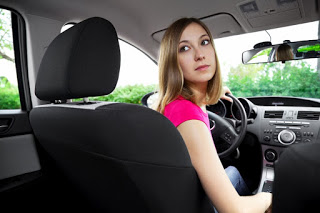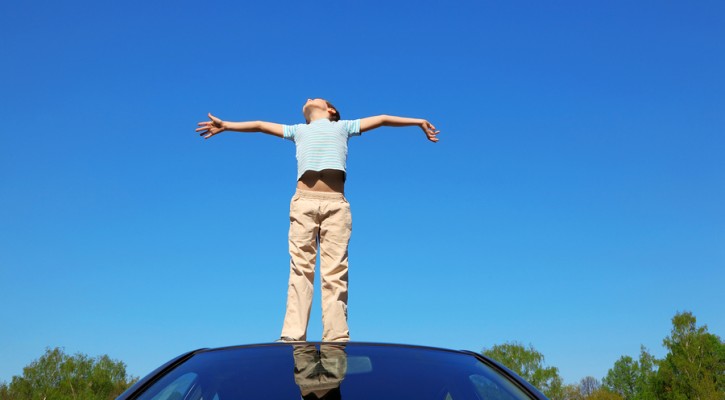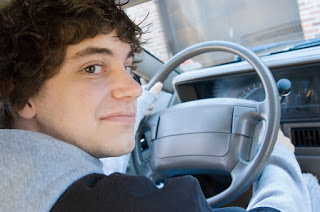Monthly Archives: May 2012

Driving Lesson: Road Parking Tips
May 20, 2012
Parking is as much an important part of driving as driving itself. Learning how to park in different circumstances is an important part of the road test. The road test examiner may ask you to park in a parking lot space, to parallel park, or both. You need to know the proper procedures:
Signaling – Remember that you should signal your intentions at all times; even in a parking lot. Turn on your turn signal before you begin your turn into a parking space to let other drivers know what direction you are turning in. You should also signal as you exit the space to let other drivers know what direction you will be going in as you exit the space.
Parking lot– The examiner may point to a specific parking spot in the parking lot for you to park in. The spot may be lined on either side with orange cones to represent cars in the adjoining spaces. If you were to hit one of the cones, it will mean an automatic failure. Practice parking in a space by looking toward the center of the space before you begin your turn and keeping your eyes on the center of the space as you pull into the parking spot. Don’t look at the hazards on either side; look at where you want to put your car. Keep practicing until it is second nature.
Parallel parking – The examiner will point out a spot and ask you to demonstrate your ability to parallel park and, just like in the parking lot, there may be cones in front and back representing the bumpers of other cars; you don’t want to hit them. Parallel parking is really easy but it takes a lot of practice. Pull up even and about two to three feet away from the vehicle in front. Turn your wheel all the way to the right and slowly start to back up. As you come even with the rear bumper of the car next to you, start turning your wheel to the left. Once you enter the space, adjust your car so that it is parked an even distance between the car ahead and the one in the rear. You should be no more than eighteen inches from the curb.
Parking on a hill – The examiner may ask you to demonstrate or explain the procedures for parking on a hill with or without a curb.
- Downhill with or without a curb – Parking facing downhill is easy. Whether there is a curb or not, you should always turn the front wheels to the right so that, if your brakes should fail, the car will roll off of the roadway.
- Parking uphill without a curb – Parking facing uphill without a curb means you should turn your wheels to the right. Just like parking downhill, if your brakes should fail, the car will roll off of the roadway.
- Parking uphill with a curb – This is where it gets a little different. When parking facing uphill with a curb, you want to turn your front wheels to the left, toward the center of the road. Once you have turned your wheels, you will want to back up just a bit until you feel the wheels bump up against the curb. In this case, if your brakes should fail, the car’s front wheels should jam up against the curb and prevent the car from moving any further.
Parking properly is easy but it does take practice. Make sure you practice each maneuver until it becomes second nature to you before you take your road test.
Need extra practice? Take our behind the wheel road test course. It’s 100% online and shows you exactly what the examiner will be looking for.

Car Surfing and Riding Outside the Vehicle
May 11, 2012
Recently, news reports have told the story of at least five teens that were severely injured as a result of “car surfing”, or riding outside a vehicle.
In one incident, a 14 year old Georgia boy was riding in the trunk of a vehicle overloaded with teens. He was ejected from the vehicle and suffered severe brain injury. He remained in the intensive care unit for three weeks until he was taken off life support and died. The 19 year old driver is now facing charges in the incident.
In another incident from Georgia, a 16 year old boy skipped school with several others and was hanging outside an SUV traveling at a high rate of speed. The driver lost control and the SUV rolled crushing the teen underneath. At last report, he remains in a coma.
Two girls, one from Pennsylvania and another from Florida were injured while attempting to car-surf. Car surfing involves trying to remain upright or “surfing” on top of a moving vehicle. The Pennsylvania girl was taken to the hospital in critical condition. The Florida girl remains in a medically induced coma.
Another 17 year old boy was trying to hold down a mattress in the back of a pickup truck traveling at approximately 35 to 40 mph. The airstream, both above and below the mattress, created a wing-like effect, lifting the mattress along with the boy into the air. The boy died due to massive brain trauma.
Teens tend to feel invincible but no matter how strong, athletic or agile they may be, they will never be strong or agile enough to overcome the laws of physics. An object in motion tends to remain in motion in a straight line. That means that, while attempting to car-surf, if the vehicle should suddenly stop or turn, the “surfer” will continue traveling ahead at the same rate of speed, usually crashing into the pavement. Even at speeds as low as 10 to 15 mph, the results can be catastrophic.
Even inside the vehicle, if they aren’t wearing a seat belt, they are asking for trouble. Another recent incident involved a teen girl who was engaged in horseplay with her boyfriend while the vehicle was in motion. Authorities are unsure of what exactly happened but it is felt that the girl accidentally hit the door handle, opening the door. Not wearing a seat belt, she was thrown out of the vehicle and suffered traumatic brain injury.
Most of these incidents involved teens engaged in horseplay in or on a moving vehicle without a seat belt to hold them in place; most also involved cars driven by a teen with more than one other passenger. Graduated driving laws in most states usually restrict the number of passengers a teen can carry because it is well proven that, the more teen passengers a teen driver carries, the greater the distractions and the greater the temptation to show off.
Teens and adults need to be constantly reminded that there is no safe place on or in a vehicle except in a passenger seat securely buckled in with a seat belt.

Teen Emotions and Driving
May 5, 2012
Upset? Angry? Emotional? We all get that way. It is a natural part of life and sometimes a natural part of the day. Life and events are out of our control and so we all are thrown hurdles to get through; many times unexpectedly. Dealing with the emotions of what comes along can be complicated. But what you want to avoid is getting behind the wheel when you are emotional, angry or upset.
Many times people let their emotions get the best of them. When you are driving, you have to be able to give it your full attention. The attitude you have is your state of mind at any given moment, whether that be happy or sad, excited or full of anxiety.
Your state of mind controls how you behave and react to situations. The actions and reactions are a normal part of everyday living and interaction with others. When you are emotional behind the wheel, it can interfere with your ability to think clearly and inadvertently create a mental distraction.
For instance, if you are worried or upset or thinking through a complicated issue while driving, you may not notice your upcoming exit or turn, causing you to miss it or react suddenly. You become an inattentive driver. You may fail to scan the environment ahead or notice debris in the roadway. When you are angry or upset, you may increase your risk taking and pull out in front of another vehicle, cut someone off, or tailgate.
Positive emotions are dangerous too. Even when you’ve received the best of news there can be a lack of concentration when you get behind the wheel leading to increased reaction times. You can lose your ability to notice what other drivers are doing, anticipate their next moves and determine how you will respond.
Driving when emotions are high can interrupt your ability to process information in the driving environment and incite you to act out your emotions. You can lose your ability to perform skills that require precise timing to complete. Physically, your body can react in many ways including increases in heart beat and respiration rates and spikes adrenaline levels.
Teens’ brains are still developing and are very vulnerable to their emotions and the emotions of others. They usually have less means and independence than they would like, which can increase their frustrations and intensify their emotions.
So what do you do?
- Set a good example and choose not to drive when upset.
- Recognize the role emotions play when driving. Look at examples of other drivers on the roadway who maybe mental distracted and discuss the danger they pose together.
- Examine your and your teenager’s emotional make up and discuss coping strategies.
- Identify and predict situations that could cause both positive and negative emotions.
- Ask for a commitment from your teen to delay driving when they are emotional or upset. Get a verbal agreement and include it in your Parent & Teen Driving Contract.
What are some coping strategies?
- If you are excited or upset, ask someone else to drive you.
- Give yourself a few minutes and quiet your mind. Close your eyes and take a several deep breaths.
- Remember that you can’t control what happens to you, you can only control how you respond to it and many times that determines your ultimate success.
- Separate the actions, reactions and emotions from the people and the situations: John’s immature vs. John’s acting immature.
- If you can, take a short walk or do some quick exercises to settle your body down.
- Leave a few minutes early to give yourself extra time to get to your destination, so you won’t be hurried.
If you become upset while you are driving, pull over to a safe place. Take a few minutes, walk around, and breathe deeply. Avoid the risk and avoid the consequences…Drive with a safe attitude.
Learn more about the Facts Behind Teen Crashes.
